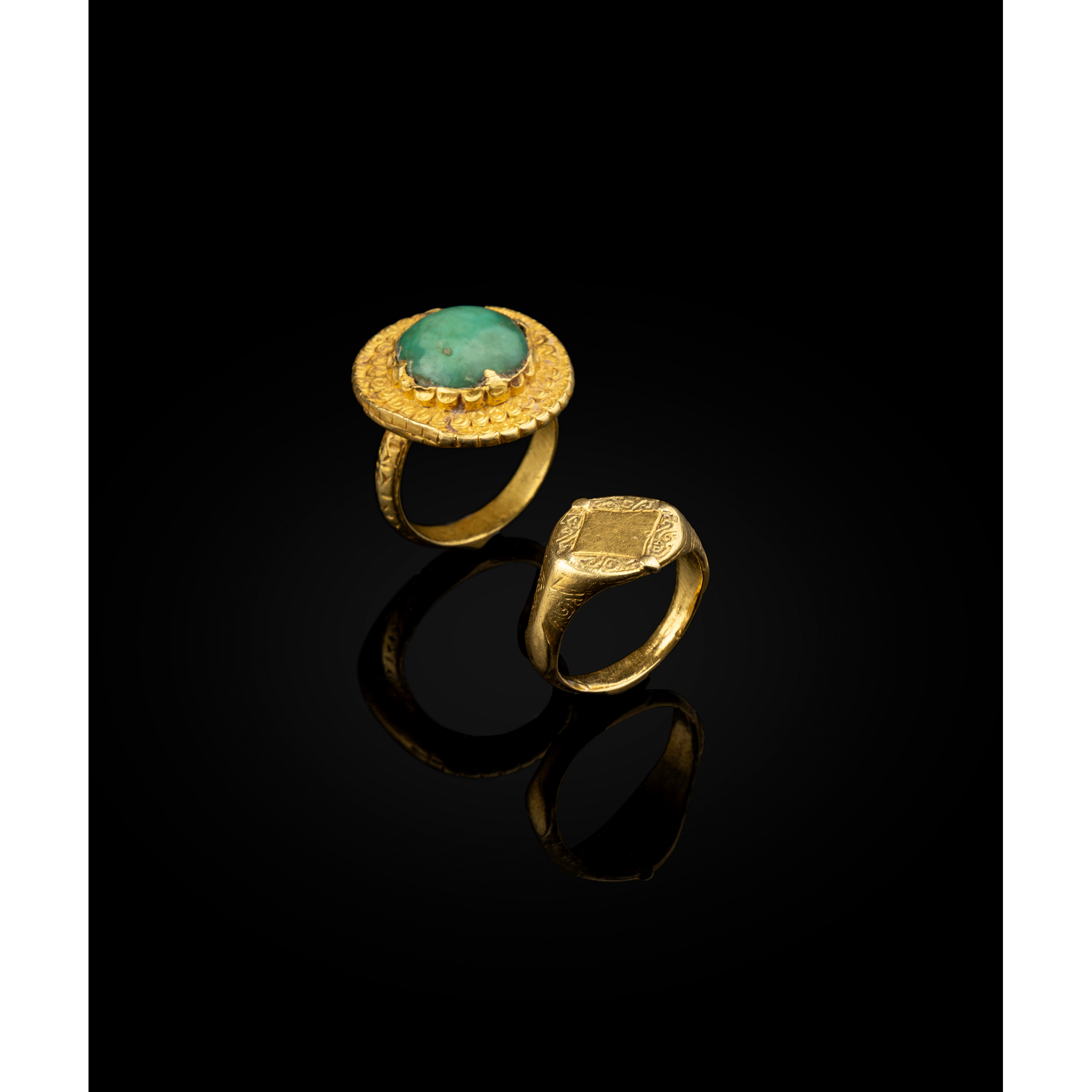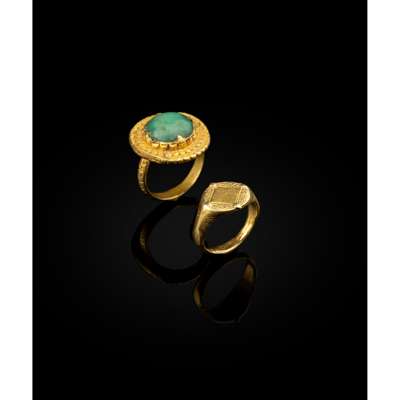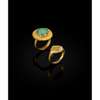
Lot 27

TWO FINE TIMURID GOLD RINGS
CENTRAL ASIA, 15TH/ EARLY 16TH CENTURY


Auction: 10 December 2025 from 14:00 GMT
Description
two rings, the first with table of petalled design with a cabochon turquoise in the centre, a completely circular shank, the second with bezel in the form of a pointed ovoid with a diaper design, the shank widening at the shoulders
Dimensions
11.2gr.
Provenance
Formerly, from a UK collection formed in the 1960s.
Footnote
Although very little jewellery survives from the Timurid period, the few surviving rings allow a useful comparison with the present piece. A pair of rings in the Metropolitan Museum of Art (inv. nos. 12.224.6 and 41.160.280) show the same basic forms as the present examples. The overall form of the first present ring, with a perfectly circular shank and a large bezel sitting atop it, inlaid with a stone, is paralleled by inv. no. 12.224.6, although the Metropolitan’s example features a flat inscribed stone. The second of the present rings is conceptually similar to inv. no. 41.160.280 with the bezel more closely integrated into the widening shank. Both Metropolitan rings are ascribed to 15th-16th century Persia or Transoxiana, suggesting that the present pieces are of the same origin. Based on the evidence of miniature paintings, these rings would have been worn by men on their fourth finger. [Jenkins, K., and Keene, M., Islamic Jewelry in the Metropolitan Museum of Art, The Metropolitan Museum of Art, New York, 1983, pp. 99-100]. A gold ring, very much alike in form to the second of the present examples, was sold at Bonhams, Islamic and Indian Art, 15 April 2010, lot 164.

